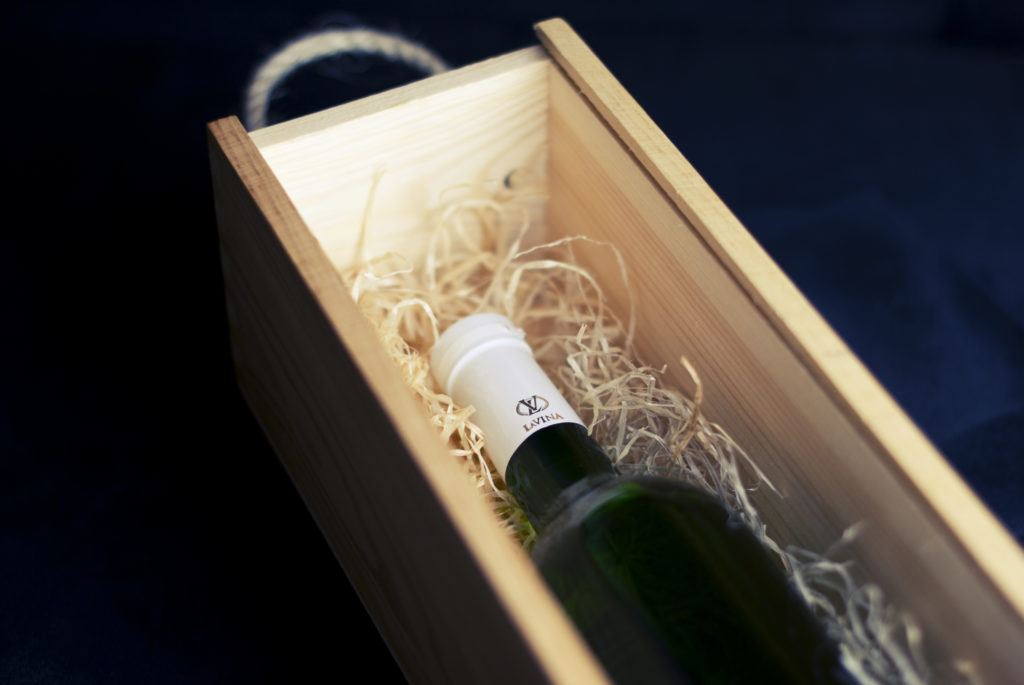Using Blockchain to Tackle Fraud in the Wine Supply Chain

Wine collectors are being duped by fake wine in the supply chain. Blockchain offers a potential digitization solution to ensure transparency and authenticity in the supply chain.
The wine industry has a fraud problem. While the issue of wine fraud dates as far back as first century Rome1 the issue recently came to a head in 2012 when wine counterfeiter Rudy Kurniawan was convicted of dumping roughly 130 million dollars of fake wine into the collectible market2. Beyond this specific incident, there are countless examples of sophisticated wine collectors being scammed by fakes such as billionaire Bill Koch and his experience of purchasing wine that was fraudulently attributed to Thomas Jefferson3 or the New York Times bestseller The Billionaire’s Vinegar detailing a German selling adulterated wine. This has created an authenticity problem for companies like Sotheby’s who act as a middleman in wine auctions and are being squeezed to provide more transparency and authenticity about the wine being sold4. The impact of this on the wine supply chain has been amplified by the megatrend of digitization and the success digital solutions have had in improving business outcomes in other industries such as the insurance industry5. If auctioneers like Sotheby’s don’t respond to this trend they will lose trust in the industry and therefore sales. There is also a general acceptance that “wines with demonstrable provenance are worth much more than they were previously”6 indicating that there is a business opportunity for any agent in the industry that can provide a deeper level of confidence to collectors.
The wine industry and Sotheby’s are responding to this trend of fraud in several digital and non-digital ways. There is a group of scientists utilizing fundamental science such as carbon dating and nuclear isotope identification to verify the age of collectible wine7. There is also a group looking to embed RFID tracking in new bottles to provide a level of digital verification beyond the label8 but an RFID solution has a limited shelf life and leaves the opportunity for future fraud. One solution gaining traction is the use of blockchain technology to create a verifiable history of ownership for rare wines9. This implementation is being driven by the company Everledger and their “Chai Wine Vault”. Blockchain is a distributed ledger technology originally developed for digital currency but currently being applied to the digitization of many supply chains. Essentially blockchain creates a distributed database in an irreversible ledger which anyone who has an interest can keep a copy of. This concept of a distributed database can be leveraged to create a complete flow of chain of ownership with digital signatures that can be reviewed by any party10, 11. Through a fully built blockchain solution any interested party could verify their bottle of wine against the information stored in the distributed ledger to verify the authenticity of the bottle. Everledger originally developed their blockchain solution to tackle the problem of fraudulent information in the diamond industry. In 2016 Everledger secured and authenticated its first bottle of wine by creating a digital footprint based on more than 90 data points on the bottle12. A blockchain solution presents an interesting opportunity for both short term and long term improvements as it allows for an immediate improvement in information but will become more valuable as it gains a bigger network of adoption.
While blockchain is an interesting application of digitization to the wine supply chain it is not without its problems. In the short term companies like Sotheby’s need to create buy-in across the wine supply chain (producers, other auctioneers/facilitators, collectors, experts) to create a critical mass of users relying on the “Chai Wine Vault” as an authoritative source of information. While this solution also provides a chain of ownership it does not necessarily answer the original problem of authenticity for the wine supply already in circulation and requires the opinions of experts to initially verify a bottle. For this reason, the industry needs to continue to invest in fundamental scientific verification options beyond the digitization efforts in the supply chain.
The application of blockchain and subsequent digitization in an industry as old as wine collecting does leave a few open-ended questions to address such as; Will an “old school” industry like wine collecting truly embrace a cutting-edge digital ledger solution even with the current authenticity problems challenging the industry? How do you create trust in the original point of entry to the ledger for wine currently in private collections?
(714 Words)
1 Eric Annino, “How Blockchain Can Restore Trust In The Wine Industry,” ForbesBrandVoice, September 11, 2017, https://www.forbes.com/sites/sap/2017/09/11/how-blockchain-can-restore-trust-in-the-wine-industry/#16d443b31874, accessed November 2017.
2 Elin McCoy, “New Wine Fraud Website Will Help You Avoid Fake Bottles”, Bloomberg, February 11, 2015, https://www.bloomberg.com/news/articles/2015-02-11/new-wine-fraud-website-will-help-you-avoid-fake-bottles, accessed November 2017.
3 “Corkscrewed,” 60 Minutes, CBS, October 22, 2017.
4 Guy Collins, “Mouton ’45 Leads $21.9 Million Koch Wine Auction at Sotheby’s,” Bloomberg, May 22, 2016, https://www.bloomberg.com/news/articles/2016-05-22/mouton-45-leads-21-9-million-koch-wine-auction-at-sotheby-s, accessed November 2017.
5 “Blockchain applications in insurance,” Deloitte, 2016, https://www2.deloitte.com/content/dam/Deloitte/ch/Documents/innovation/ch-en-innovation-deloitte-blockchain-app-in-insurance.pdf, accessed November 2017.
6 Alexa Mason, “Can New Technology Put an End to Wine Fraud?,” Savingadvice.com, January 30, 2017, https://www.savingadvice.com/articles/2017/01/30/1047281_wine-fraud.html, accessed November 2017.
7 “How Atomic Particles Helped Solve A Wine Fraud Mystery”, NPR, June 3, 2014, https://www.npr.org/sections/thesalt/2014/06/03/318241738/how-atomic-particles-became-the-smoking-gun-in-wine-fraud-mystery, accessed November 2017.
8 Claire Swedberg “Château Le Pin Uses NFC to Ensure Its Wine’s Authenticity”, RFID Journal, http://www.rfidjournal.com/articles/view?10834, accessed November 2017.
9 Ben Dickson, “Blockchain has the potential to revolutionize the supply chain,” Techcrunch, November 24, 2016, https://techcrunch.com/2016/11/24/blockchain-has-the-potential-to-revolutionize-the-supply-chain/, accessed November 2017.
10 Ronnie Garrett, “HOW BLOCKCHAIN IS TRANSFORMING THE SUPPLY CHAIN,” Supply & Demand Chain Executive. May2017, Vol. 18 Issue 2, via Ebscohost , accessed November 2017.
11 Morgen E. Peck, “Blockchain world – Do you need a blockchain? This chart will tell you if the technology can solve your problem.,” IEEE Spectrum. Oct2017, Vol. 54 Issue 10, via IEEE Xlpore, accessed November 2017.
12 “Everledger secures the first bottle of wine on the blockchain,” Finextra, December 9, 2016, https://www.finextra.com/pressarticle/67381/everledger-secures-the-first-bottle-of-wine-on-the-blockchain, accessed November 2017.





D poses some interesting questions. The way that auction houses are currently trying to verify wine has clearly been proven unreliable. However, much of the wine that is challenging to verify is aged, and even if digitization of it’s whereabouts begin now, it could be fabricated. Using blockchain for wine, could mitigate problems in the future by beginning when a current bottle is originally sold, but I am unsure if it can rectify the challenges of verifying vintages.
D makes a convincing argument that blockchain technology can address a real problem in the wine collecting industry. D also raises a good and fair question: will the new technology be adopted by a conservative industry?
The wine auction industry is, relatively speaking, small. We learned in Chateau Margaux that the wine industry is a $100 billion one. The wine auction industry, on the other hand, is a comparatively smaller one at just over $300 million a year. [1] Given its insular, small reach, adoption of blockchain technology has the potential to be rapid. However, given the lack of general penetration for blockchain technology today, I suspect that it will take some time. One reason may be the price fluctuations one can expect with the adoption of the technology. Today, vintage wines can expect to sell for more the more they age. Verified wines, D notes, will sell for more than unverified wines. Which is to say, blockchain technology may disrupt the pricing model for the entire industry. I suspect the wine collectors who own old vintages and acquire blockchain-verifiable new vintages will hold off until this potential volatility is better understood.
[1] http://www.winespectator.com/webfeature/show/id/End-of-Year-Auction-Report-2016
This is a really interesting concept, I wonder how this would impact prices on the wine collector’s market – I imagine it could reduce the overall supply of collector wine (taking some of the fake wine off the market) and increase prices (less buyer uncertainty / risk so more willingness to pay). There could also arise an illicit secondary market of authenticated but empty wine bottles that could be fraudulently rebottled and sold.
Beyond fraud, I’m excited to see if collectors will be able to use data analytics to determine “corked” wine. Corked wine is a huge problem with older wines where it’s unclear if the wine is spoiled [1] – this often depends on historical storage conditions, the corking of the vintage and quality of the wine itself.
(1) Chatonnet, P., Bonnet, S., Boutou, S. and Labadie, M. (2004). Identification and Responsibility of 2,4,6-Tribromoanisole in Musty, Corked Odors in Wine. Journal of Agricultural and Food Chemistry, 52(5), pp.1255-1262.